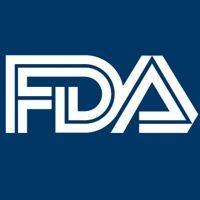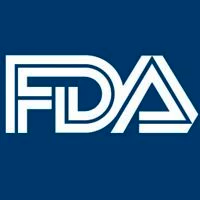Article
Pivotal Trials Cast PARP Inhibitors into Frontline Maintenance Therapy in Ovarian Cancer
Author(s):
Thomas Herzog, MD, discusses the data that have cast PARP inhibitors into the forefront of treatment in the up-front management of patients with advanced ovarian cancer.
Thomas Herzog, MD

In 2020, the question is not: should frontline maintenance therapy be prescribed in advanced ovarian cancer, but rather which maintenance therapy should be prescribed? said Thomas Herzog, MD, who added that PARP inhibitors reside at the center of this discussion.
“In the past several years, we’ve really changed the landscape of ovarian cancer. The new data with PARP inhibitors in the first-line setting has created a paradigm shift,” said Herzog. “We certainly see the most benefit in patients with BRCA mutations, but a significant number of patients with homologous recombination deficiency [HRD] also benefit from these agents.”
In a presentation during the 2020 Institutional Perspectives in Cancer webinar on Ovarian Cancer, Herzog, Paul & Carolyn Flory Endowed Professor of Obstetrics & Gynecology, Division of Gynecologic Oncology, and deputy director at the University of Cincinnati Cancer Institute, discussed the data that have cast PARP inhibitors into the forefront of treatment in the up-front management of patients with advanced ovarian cancer.
SOLO-1 Trial
The phase 3 SOLO-1 trial set the stage for frontline PARP maintenance therapy in advanced ovarian cancer. In the trial, women with newly diagnosed stage III/IV ovarian cancer with a germline or somatic BRCA mutation in complete response (CR) or partial response (PR) to platinum-based chemotherapy were randomized 2:1 to 300 mg of olaparib (Lynparza) twice daily (n = 260) or placebo (n = 131). At 2 years, patients with no evidence of disease stopped therapy, whereas patients in PR could continue on treatment.
At the primary analysis, the investigator-assessed progression-free survival (PFS) was not reached with olaparib versus 13.8 months with placebo (HR, 0.30; 95% CI, 0.23-0.41; P < .0001). At 3 years, 60.4% of patients in the olaparib arm were progression free versus 26.9% of those in the placebo arm.1
In December 2018, olaparib became the first PARP inhibitor to receive regulatory approval as frontline maintenance therapy for women with germline or somatic BRCA-mutant advanced ovarian cancer who are in CR or PR to first-line platinum-based chemotherapy.
Five-year follow-up data, which were presented at the virtual 2020 ESMO Congress, showed sustained benefit with olaparib, demonstrating a median PFS of 56 months versus 13.8 months with placebo (HR, 0.33; 95% CI, 0.25-0.43). The 5-year PFS rate with olaparib was more than double that with placebo, at 48% versus 21%, respectively.2
PRIMA Trial
The phase 3 PRIMA trial was another pivotal trial that evaluated frontline maintenance therapy in women with advanced ovarian cancer in CR or PR to platinum-based chemotherapy, but with niraparib (Zejula). Although the trial was similarly designed, eligible patients included those with HRD and homologous recombination proficient (HRP) tumors who had residual disease after primary cytoreductive surgery.
The study randomized patients 2:1 to niraparib (n = 487) or placebo (n = 246). At the start of the study, niraparib was given at a fixed dose of 300 mg, which was adjusted to include a lower dose of 200 mg for those weighing less than 77 kg and for those with platelet counts below 150K/μL.
“The investigators prospectively introduced the concept of individualized dosing to decrease the amount of thrombocytopenia that is associated with niraparib,” said Herzog.
The median PFS in the HRD population per blinded independent central review was 21.9 months in the niraparib arm versus 10.4 months in the placebo arm, reflecting a 57% reduction in the risk of progression or death (HR, 0.43; 95% CI, 0.31-0.59; P < .001). In addition, each landmark analysis favored niraparib. At 6, 12, and 18 months, the PFS rates with niraparib were 86%, 72%, and 59%, respectively, versus 68%, 42%, and 35% with placebo.3
In the intention-to-treat population, inclusive of patients with BRCA mutations, HRD, and HRP, the median PFS was 13.8 months with niraparib versus 8.2 months with placebo (HR, 0.62; 95% CI, 0.50-0.76; P < .001).
“If you include all the patients in the trial, you still see a significant reduction in the risk of relapse or death,” said Herzog. “As oncologists, [any hazard ratio] below 0.70 is [a win], so we were pretty excited to see these results.”
In the subgroup analysis, HRD-positive patients who harbored a BRCA mutation were shown to derive the greatest benefit with niraparib (HR, 0.40), followed by HRD-positive, BRCA wild-type patients (HR, 0.50), and HRP patients (HR, 0.68).
On April 29, 2020, niraparib received regulatory approval as frontline maintenance therapy for patients with advanced ovarian cancer who are in a CR or PR to first-line platinum-based chemotherapy, regardless of biomarker status.
Moreover, an analysis that was presented during the 2020 ESMO Congress indicated that niraparib did not lead to a decrement in quality of life compared with placebo.4
PAOLA-1 Trial
On the heels of the SOLO-1 trial, the phase 3 PAOLA-1 trial evaluated olaparib plus bevacizumab (Avastin) in women with newly diagnosed advanced ovarian cancer in CR or PR to platinum-based chemotherapy. In the trial, women were randomized 2:1 to 300 mg of olaparib twice daily for 2 years plus 15 mg/kg of bevacizumab (n = 537) every 3 weeks or placebo plus bevacizumab (n = 269).
“More of these patients had disease that was not evaluable because the investigators allowed patients who had primary cytoreduction into the study who did not have measurable disease,” said Herzog.
The median investigator-assessed PFS was 22.1 months with the combination versus 16.6 months with placebo plus bevacizumab, which translated to a 41% reduction in the risk of progression or death with olaparib (HR, 0.59; 95% CI, 0.49-0.72; P < .0001).5
As in the PRIMA trial, investigators demonstrated hierarchical benefit with the PARP inhibitor, with the greatest degree of benefit in women with HRD-positive, BRCA-mutant tumors (HR, 0.33), followed by those with HRD-positive, BRCA wild-type tumors (HR, 0.43). In patients with HRD-negative/unknown tumors, the additive benefit of olaparib was not clear, with a confidence interval that crossed 1.00 (HR, 0.92; 95% CI, 0.72-1.17).
“We have to remember that these patients went up against an active comparator not just placebo, but bevacizumab, which is an FDA-approved drug for maintenance with chemotherapy in [the frontline setting],” said Herzog.
On May 8, 2020, the FDA approved the combination of olaparib and bevacizumab as maintenance therapy for women with advanced ovarian cancer who are in CR or PR to first-line platinum-based chemotherapy and whose cancer is HRD positive, defined by a BRCA mutation, and/or genomic instability.
Additional results from the trial, which were presented during the 2020 SGO Annual Meeting, showed that the combination led to an improvement in PFS versus bevacizumab alone, regardless of the timing of surgery or residual disease status after surgery.6
Providing perspective on the adverse effects in PAOLA-1 and PRIMA, Herzog explained that more grade 3 or greater treatment-related AEs were reported in PAOLA-1, and although more dose reductions were seen in PRIMA, fewer discontinuations due to AEs were reported.
Which frontline maintenance clinical trial showed benefit in patients without HRD?
References:
- Moore K, Colombo N, Scambia G, et al. Maintenance olaparib in patients with newly diagnosed advanced ovarian cancer. N Eng J Med. 2018;379(26):2495-2505. doi:10.1056/NEJMoa1810858
- Banerjee S, Moore K, Colombo N, et al. Maintenance olaparib for patients with newly diagnosed advanced ovarian cancer and a BRCA mutation: 5-year follow-up from SOLO1. Presented at: 2020 ESMO Congress; September 19-21, 2020; Virtual. Abstract 811MO.
- Gonzalez-Martin A, Pothuri B, Vergote I, et al. Niraparib in patients with newly diagnosed advanced ovarian cancer. N Engl J Med. 2019;381(25):2391-2402. doi:10.1056/NEJMoa1910962
- Pothuri B, Han S, Chase D. et al. Patient-reported outcomes (PROs) in patients (pts) receiving niraparib in the PRIMA/ENGOT-OV26/GOG-3012 trial. Presented at 2020 Virtual ESMO Congress; September 19-September 21, 2020; Virtual. Abstract 810MO.
- Ray-Coquard I, Pautier P, Pignata S, et al. Olaparib plus bevacizumab as first-line maintenance in ovarian cancer. N Eng J Med. 2019;381(25):2416-2428. doi:10.1056/NEJMoa1911361
- Grimm C, Cropet C, Ray-Coquard I. Maintenance olaparib plus bevacizumab (bev) after platinum-based chemotherapy plus bev in patients (pts) with newly diagnosed advanced high-grade ovarian cancer (HGOC): efficacy by timing of surgery and residual tumor status in the Phase III PAOLA-1 trial. Data made available as part of the virtual platform for the SGO 2020 Annual Meeting on Women’s Cancer. Abstract 34. bit.ly/34lith6.









